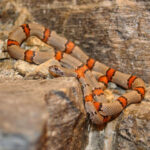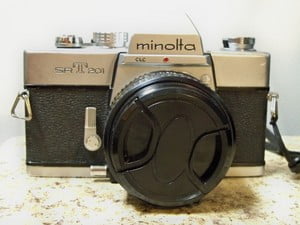Although you might cringe at the idea of buying a pet snake for your child, many kids are enthralled by reptiles. They don’t even want to look at puppies, and kittens couldn’t be more boring. For some children, having pets like snakes is like a status symbol at school, while others are simply drawn to cold-blooded animals.
What you shouldn’t allow your child to think (or think yourself) is that snakes are easier to manage than other types of pets. Just like dogs and cats, snakes require attention, a clean environment, food to eat and a place where they feel safe. If you don’t think your child is capable of providing that for an animal, he or she might not be ready for a pet snake.
My parents purchased my very first pet snake when I was twelve years old, which was a perfect age at which to learn responsibility to another living creature. My first snake was a four-foot-long ball python named Lucy, but there are several snakes that can be appropriate for your child.
One of the most disturbing aspects of owning a snake is the fact that they eat live food: Animals which in other households might be considered pets. Thankfully, however, pet stores now sell frozen mice and rats, which can be thawed in hot water and fed to your snake. When you go to the pet store, find out if they have any snakes that have already been trained on frozen mice so your child doesn’t have to feed live animals.
The ball python is a great choice as a pet snake for your child because it is docile and easy to handle. They enjoy resting in your lap or on your shoulder for hours at a time, and although they require about a week to adjust to new environments, they are also generally healthy.
The only negative aspect to a ball python is that they can get rather large (up to 48 inches), so they are only appropriate for older children. A five-year-old would probably be frightened by such a large serpent, so consider size when buying a pet snake for your child.
Another great snake for children is the corn snake, which are far more slender than ball pythons and lack any fangs whatsoever. They are considered great pets for children because they are non-aggressive and tend to keep to themselves; plus, they come in a wide range of colors.
You have to be careful when buying a corn snake as a pet for your child, however, because they are known as escape artists and will get away if their habitat is not tightly closed. Children must remember to close the cage and latch the door after feeding or handling them.
And finally, the king snake is another good pet snake for your child. It is slightly larger than the corn snake, but just as harmless and gentle. King snakes are known for eating other snakes, but they can survive just fine on frozen rodents you find at the pet store.
If you’re going to buy a pet snake for your child, regardless of the species, follow these important guidelines:
Find all equipment in advance. Different snakes require different equipment, so talk to your pet store to find out what you need before actually purchasing the snake. A terrarium, thermometer, water source, heat lamp and wood shavings for the floor are all usually essentials.
Research the snake online. You can prepare your child for getting a pet snake by perusing the Internet for information. They can see pictures of the different snakes and learn about their habits and needs. This is a great resource that wasn’t available when I was a kid, so put it to good use.
Set rules and enforce them. Until your child has gotten used to your pet snake, it might be a good idea to only allow him or her to handle it when you are in the room. To avoid temptation, keep the snake in the family room or a study.
Feed the snake together. Even docile snakes get a little aggressive when they smell food. Until your child has matured sufficiently to handle this task, feed the snake together. You can do it the first few times, then allow your child to do it under your supervision.
Teach good safety measures. Snakes are usually clean and free of disease, but nevertheless, make sure your child washes his or her hands after handling his or her pet snake. Also, make sure all handling is done in a calm, enclosed environment where nothing is likely to startle either of them.





